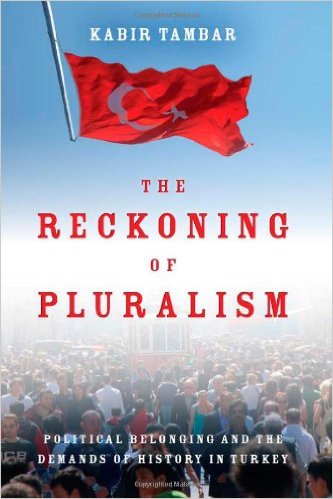|
Reviewed by Maurizio Geri, PhD candidate in International Studies, Old Dominion University Kabir Tambar, a sociocultural anthropologist at Stanford University, wrote an interesting book on the relationship between the Turkish history of nation state building and its relationship with religious pluralism, taking as case study the Alevi Shia minority. The author starts from the assumption that “politics of pluralism” is an oxymoron, at least in an “imagined” homogeneous nation states like Turkey. This resembles Benedict Anderson’s “Imagined Community,” and the author recognize that examining such delicate issues like imagined nation versus pluralism, in particular the historical perspective, may cause explosive debates today in Turkey. The Alevi are estimated to be around 15 percent of the population, but there are no clear statistics on this as for every minority in Turkey.This case study is not a novelty in the literature as other books examined the “Alevi Question” and the fact that Alevi could not be recognized by the Republic, since the only minorities with official status were ethnic ones, with Sunni Islam being the only recognized Muslim sect. However, this book sheds new light on the issue, in particular from the Alevi perspective, based on field research that the author conducted between 2005 and 2007, mostly in the provincial town of Corum, because it is a town “spatially organized along sectarian lines” (p. 23). Has Alevism been included in the framework of the Turkish ethnic nationalism and if so how? The author argues that the Alevi culture has been integrated mostly with “public display,” as an example of Turkish diversity, in particular with the Alevi “revival” in the 1980s and 1990s, but not for a real political incorporation. In Turkish Republican history there has always been tension and ambiguity between the recognition of Alevi culture as “an element of Turkey’s folkloric heritage” (p. 21) and sectarian hostility towards them. The recognition of these religious elements of Alevism happened only as a validation of the national identity. Recently, with the AKP governments, there has been some more democratic opening, even if the Alevis have been skeptical because the AKP anti-secularism seen as limiting pluralism. Looking specifically at the six chapters, in the first one, the author introduces the topic, explaining how the Turkish Republic was founded on an ideal of universal citizenship and at the same time on actions of exclusionary violence, and so how “pluralism represents a historical reckoning with the dominant imagining of Turkey’s political modernity” (p. 2). In the second chapter, Tambar examines the ambivalent approach to the modernization of Turkey’s Alevis, with a young urban population that is secular and modern but at the same time often avoid the institutional regulation of social differences such as the public displays of Alevi mourning, considered inappropriate to media and state dignitaries. In the third chapter, Tambar provides an explanation of the birth of modern citizenship, with the late Ottoman administration considering the Alevi as part of the nation’s cultural history, including their religiosity, but not those parts of Alevism unfit for the ‘temporalization’ of the nation, like the traditions of laments. The fourth chapter concentrates on the political-economic liberalization that Turkey experienced in the last three decades. The author argues that this liberalization produced a reinvestment in communal differences, such as the traditional dance of semah, but only in aesthetic forms, again as a “public display.” The fifth chapter explains the mechanism of historicization in Turkey to govern religious differences, from historicizing Alevi in the construction of the Turkish nation in the early twentieth century, to asking them to historicize their past in the narrative of the nation. Finally, in the sixth chapter the author examines an Alevi group, a “cemaat,” a congregation of pious individuals, performing their practices of ritual laments, remembering the Karbala battle with the famous Ashura, in order to produce a collective memory. Tambar mentions how the cemaat activities “point up what we might term the internal limits of pluralism” (p. 167), considering the Karbala parables an important element of Turkish collective identity, and so a challenge to official historicism. This reviewer believes the work provides a comprehensive examination of the historical process of democratic pluralism, between religious and political belonging, of Alevi in Turkey, with important ethnographic and anthropological insights and with a fundamental contribution to the current democratic path of Turkey, towards reconciliation and real inclusiveness. The only criticism is that the author could also have touched the issue of the ontological security of Turkishness (in particular its “Sevres syndrome”) that causes Turkish identity feel threatened by any form of pluralism that could go towards any division. |


 The Reckoning of Pluralism: Political Belonging and the Demands of History in Turkey
The Reckoning of Pluralism: Political Belonging and the Demands of History in Turkey